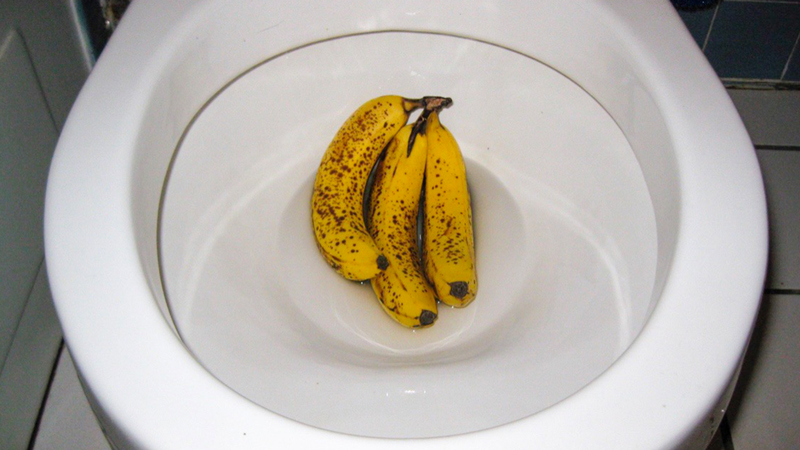Can One to Flush Food in the Toilet?
Can One to Flush Food in the Toilet?
Blog Article
Just about everyone has their own individual piece of advice on the subject of Flushing Food Down the Toilet?.

Intro
Lots of people are frequently confronted with the predicament of what to do with food waste, especially when it concerns leftovers or scraps. One usual concern that develops is whether it's okay to flush food down the commode. In this post, we'll explore the reasons that individuals could take into consideration flushing food, the consequences of doing so, and alternative techniques for appropriate disposal.
Reasons that people could think about flushing food
Lack of awareness
Some people may not be aware of the prospective damage triggered by flushing food down the bathroom. They may mistakenly believe that it's a safe practice.
Benefit
Purging food down the commode might look like a quick and very easy remedy to taking care of unwanted scraps, specifically when there's no neighboring trash bin offered.
Idleness
Sometimes, people may merely select to flush food out of large laziness, without considering the effects of their activities.
Repercussions of flushing food down the toilet
Ecological effect
Food waste that ends up in waterways can contribute to pollution and injury marine communities. Additionally, the water used to flush food can stress water sources.
Plumbing issues
Purging food can bring about clogged up pipelines and drains, causing expensive pipes repair work and troubles.
Sorts of food that need to not be purged
Coarse foods
Foods with fibrous structures such as celery or corn husks can obtain entangled in pipelines and trigger clogs.
Starchy foods
Starchy foods like pasta and rice can take in water and swell, causing blockages in pipes.
Oils and fats
Greasy foods like bacon or cooking oils must never be purged down the bathroom as they can solidify and trigger obstructions.
Correct disposal methods for food waste
Making use of a waste disposal unit
For homes geared up with garbage disposals, food scraps can be ground up and flushed through the plumbing system. However, not all foods appropriate for disposal in this way.
Recycling
Particular food product packaging materials can be recycled, decreasing waste and reducing ecological impact.
Composting
Composting is an eco-friendly method to deal with food waste. Organic materials can be composted and made use of to enrich dirt for gardening.
The value of correct waste monitoring
Lowering ecological injury
Proper waste management techniques, such as composting and recycling, assistance decrease air pollution and maintain natural resources for future generations.
Protecting pipes systems
By preventing the practice of flushing food down the commode, homeowners can avoid costly pipes repair services and maintain the integrity of their pipes systems.
Verdict
Finally, while it may be appealing to flush food down the commode for benefit, it is very important to recognize the potential effects of this action. By taking on appropriate waste monitoring practices and getting rid of food waste responsibly, people can add to healthier pipes systems and a cleaner environment for all.
FLUSH FOOD DOWN THE TOILET?
FLUSHING FOOD CAN CAUSE BLOCKED DRAINS IN YOUR HOME
All of the plumbing fixtures in your home are connected to the same sewer pipe outside of your home. This outdoor sewer pipe is responsible for transporting all the wastewater from your home to the Council sewer mains. Even small pieces of food that go down the kitchen sink can cause problems for your sewer. It should therefore be obvious that flushing larger bits of food, such as meat, risks a clog in either the toilet itself or the sewer pipes. Flushing greasy food is even more problematic because oil coagulates when it cools, coating the interior lining of your pipes.
THE TOILET IS NOT A BIN
Food isn’t the only thing that people shouldn’t be flushing down the toilet. People use the toilet to dispose of all kinds of things such as tampons, makeup wipes, dental floss, kitty litter and even underwear. Water goes to great lengths to educate residents about the high costs and stress placed on wastewater treatment systems simply from people flushing the wrong stuff down the toilet. It costs taxpayers millions of dollars each year, and homeowners thousands in blocked drain repairs.
FLUSHING FOOD IS A WASTE OF WATER
Flushing food is a waste of our most precious resource - water. In June this year Level 1 water restrictions were introduced to protect water supply from drought conditions. Much of New South Wales continues to be affected by prolonged drought with recent figures revealing up to 97 per cent of the state remains in drought. Depending on whether you have a single or dual flush toilet, every single flush uses between five and 11 litres of water. In the current climate this is a huge amount of water to be wasting on flushing food that should be placed in the bin (or better yet, the compost).
https://www.jabplumbingsolutions.com.au/blog/can-you-flush-food-down-the-toilet

I am just very excited about and I am assuming you appreciated the post. Are you aware of another person who is curious about the topic? Take a moment to promote it. Thanks for going through it.
Instant Quote Report this page